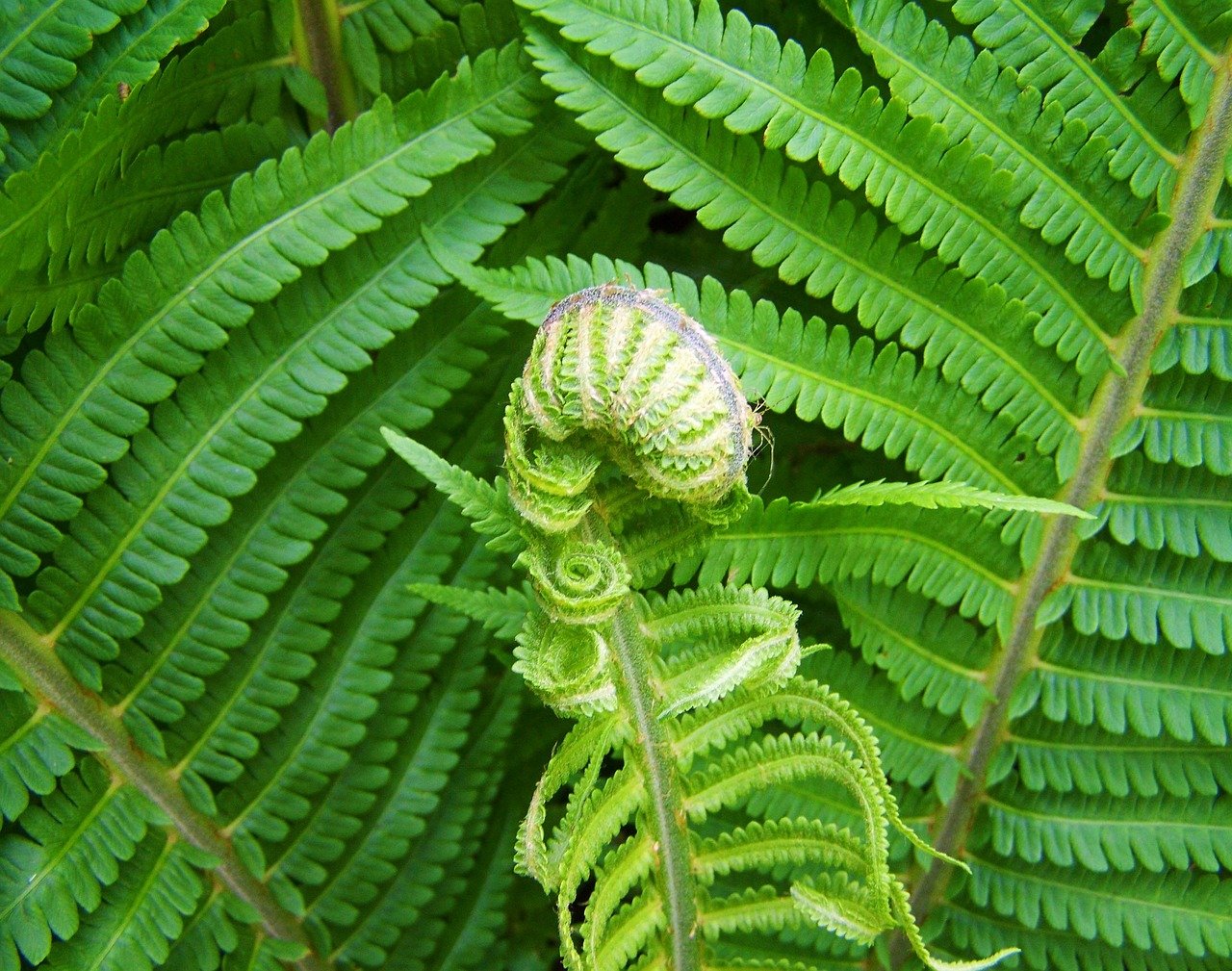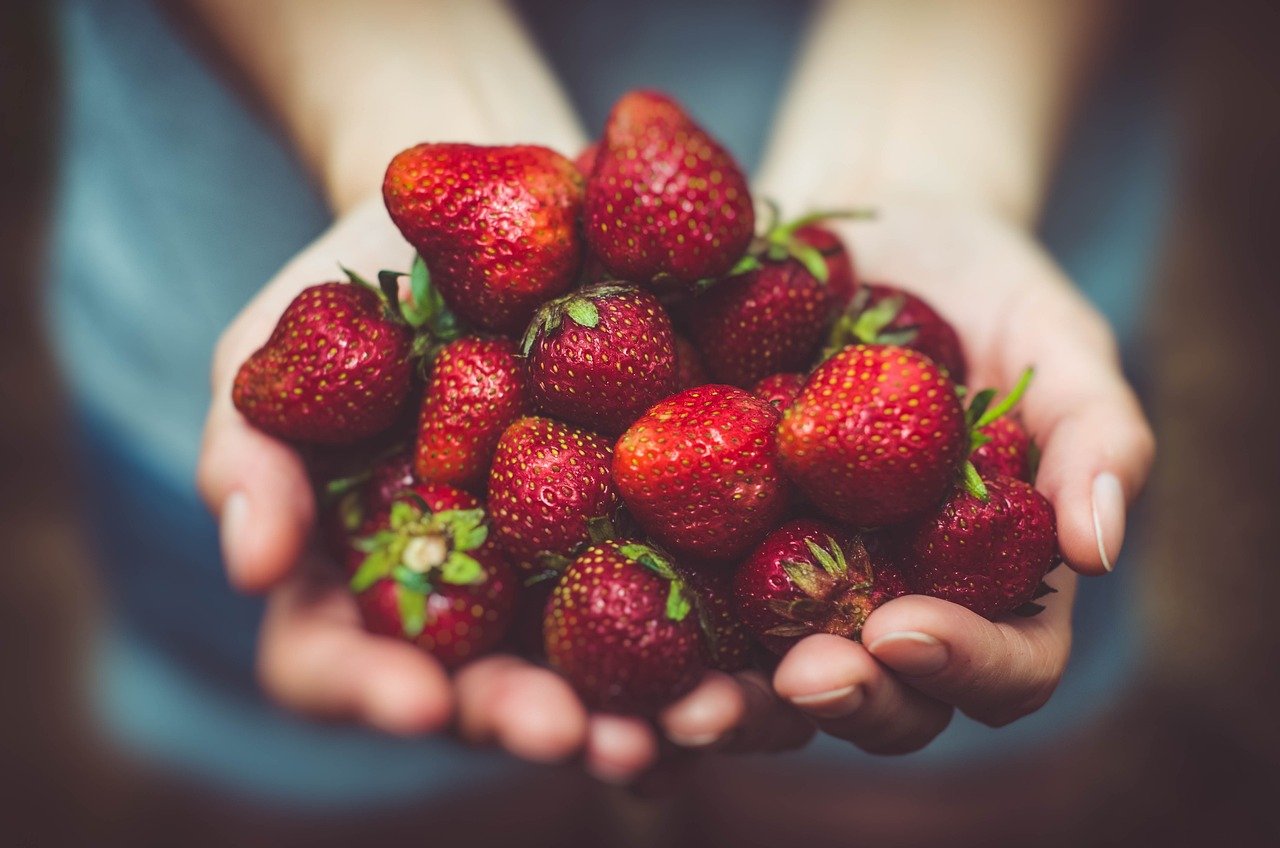Types of ferns
Exploring the Lush World of Ferns
The Enigmatic Charm of Ferns
Ever walked through a serene forest and felt captivated by the delicate, feathery foliage gracefully adorning the shaded nooks? Chances are, you were in the presence of ferns – nature’s elegant botanical beauties. These ancient plants have been around for millions of years, with their distinctive fronds unfurling in intricate patterns that never fail to mesmerize.
Ferns belong to a unique group called Pteridophytes, characterized by their lack of flowers and seeds. Instead, they reproduce through spores, adding a touch of mystery to their allure.
The Allure of Ferns: A Closer Look
Ferns boast a myriad of fascinating characteristics that set them apart in the plant kingdom. Their leaves, known as fronds, come in various shapes and sizes, ranging from delicate lace-like forms to broad fan-shaped structures. Interestingly, ferns possess vascular tissues for conducting water and nutrients throughout their stems and leaves – a defining feature that distinguishes them from mosses and algae.
Moreover, ferns exhibit a remarkable ability to thrive in diverse environments, from moist woodlands to arid deserts. Their resilience and adaptability make them true survivors in the ever-changing landscapes of our planet.
The Green Guardians: Understanding the Importance of Ferns
Ecological Role: Ferns as Ecosystem Stewards
Beyond their aesthetic appeal, ferns play crucial roles in maintaining ecological balance within diverse habitats. As primary producers, they contribute significantly to nutrient cycling by absorbing carbon dioxide during photosynthesis and releasing oxygen into the atmosphere – essential for sustaining life on Earth.
Additionally, ferns provide shelter and nesting sites for various wildlife species, fostering biodiversity within ecosystems. By stabilizing soil with their extensive root systems and preventing erosion, these verdant guardians help preserve fragile environments from degradation.
The Silent Contributors: Conservation Significance of Fern Species
Despite their understated presence in popular discourse on conservation efforts compared to charismatic megaflora like orchids or giant sequoias, ferns hold intrinsic value as indicators of environmental health. Certain species are highly sensitive to changes in air quality,
water availability, and temperature,
making them invaluable bioindicators for monitoring ecosystem integrity. Preserving fern diversity is not only essential for safeguarding plant genetic resources
but also crucial for understanding broader ecological shifts caused by human activities. Therefore,
conservation measures aimed at protecting these understated botanical wonders are paramount in ensuring the sustainability of our planet’s rich biodiversity tapestry.
Exploring the Diverse World of Ferns
Terrestrial Ferns: Rooted in Earth’s Rich Soil
When we think of ferns, the image that often comes to mind is that of lush, green foliage swaying gently in the forest undergrowth. These are terrestrial ferns, the most common type found on Earth.
Terrestrial ferns have a strong root system that anchors them firmly into the ground, allowing them to thrive in various soil conditions. They are integral parts of ecosystems, providing shelter and food for many creatures.
One remarkable characteristic of terrestrial ferns is their ability to adapt to different light levels and moisture conditions. Some species prefer shady spots with consistently moist soil, while others can tolerate drier environments with more sunlight.
The variety within terrestrial fern species is astounding, from delicate maidenhair ferns (Adiantum spp.) to robust sword ferns (Nephrolepis exaltata). Each type brings its unique beauty and ecological role to the natural world.
Epiphytic Ferns: Thriving without Touching Ground
Imagine a world where plants grow without ever touching the soil beneath them – this is where epiphytic ferns reign supreme. Epiphytic ferns are true marvels of nature, making their homes perched high up in trees or on rocks.
They have evolved unique adaptations to absorb water and nutrients from the air around them, often forming intricate networks of roots that cling onto their host surfaces. One popular example of an epiphytic fern is the staghorn fern (Platycerium spp.), named for its resemblance to majestic antlers when mounted on a tree trunk.
These ferns not only add a touch of exotic beauty to their surroundings but also play vital roles in providing microhabitats for diverse organisms such as insects and small animals. The resilience and adaptability displayed by epiphytic ferns showcase nature’s endless creativity in sustaining life beyond conventional boundaries.
Aquatic Ferns: Graceful Dwellers of Waterways
Diving into tranquil ponds or meandering streams unveils another enchanting realm where aquatic ferns reign supreme. These graceful plants have adapted to life submerged or floating on water surfaces, showcasing an elegant dance with every gentle current or ripple passing through their aquatic habitats. Aquatic ferns play crucial roles in maintaining water quality by absorbing excess nutrients and providing shelter for aquatic creatures like tadpoles and small fish.
One well-known aquatic fern species is Azolla caroliniana, commonly referred to as mosquitofern due to its ability to cover water bodies densely enough to deter mosquitoes from breeding while adding a vibrant green hue that enhances the beauty of wetlands. With their delicate fronds delicately skimming across shimmering waters, aquatic ferns bring a sense of tranquility and balance to freshwater ecosystems worldwide.
Simple Frond Ferns: Embracing Simplicity in Nature
When it comes to ferns, simplicity can be just as captivating as complexity. Simple frond ferns, with their undivided leaf structures, exude a sense of elegance and minimalism in the botanical world. These ferns typically have a single blade that emerges from the base or rhizome, showcasing a beautiful symmetrical form that is easy on the eyes.
One of the most well-known examples of a simple frond fern is the iconic Maidenhair Fern (Adiantum spp.), beloved for its delicate, fan-shaped leaves that dance gracefully in the slightest breeze. Another fascinating species within this category is the Bird’s Nest Fern (Asplenium nidus), recognized for its broad, strap-like fronds that unfurl elegantly from a central rosette.
The unbranched nature of simple frond ferns allows them to stand out in garden landscapes or indoor settings with their straightforward yet striking appearance. These ferns prove that beauty can be found in simplicity, showcasing nature’s artistry through their uncomplicated leaf structures.
Compound Frond Ferns: Nature’s Intricate Masterpieces
In contrast to their simple frond counterparts, compound frond ferns exhibit a more intricate and diverse leaf architecture that showcases nature’s artistic complexity. These ferns feature blades that are divided into smaller leaflets or pinnae along a central axis, creating a lush and layered foliage display.
The diversity within this category is vast, ranging from finely dissected fronds to bold and tropical-looking foliage patterns. One standout example of compound frond ferns is the Japanese Painted Fern (Athyrium niponicum), known for its striking silver and burgundy-colored foliage that adds an artistic touch to shaded garden areas.
Another notable species is the Kimberley Queen Fern (Nephrolepis obliterata), which boasts long arching fronds adorned with multiple sets of intricately arranged pinnae. Compound frond ferns showcase nature’s ability to create elaborate patterns and textures through their multifaceted leaf structures – each one telling a unique story of botanical beauty.
Popular Varieties of Indoor Ferns
Boston Fern (Nephrolepis exaltata)
When it comes to indoor ferns, the Boston Fern is a classic favorite among plant enthusiasts. Known for its lush, feathery fronds that gracefully arch outwards, this fern adds a touch of elegance to any room.
The Nephrolepis exaltata, or Boston Fern, thrives in bright, indirect light and prefers consistently moist soil. With proper care and regular misting to maintain humidity levels, this fern can flourish indoors and bring a refreshing green vibe to your living space.
One of the reasons why the Boston Fern is so popular is its air-purifying properties. This fern is excellent at removing toxins from the air, making it not only aesthetically pleasing but also beneficial for your indoor environment.
The Boston Fern is relatively low-maintenance compared to other houseplants and can adapt well to different humidity levels. Its vibrant green foliage provides a soothing presence that can help create a tranquil atmosphere in your home.
Maidenhair Fern (Adiantum spp.)
If you’re looking for a delicate and graceful indoor fern, the Maidenhair Fern from the Adiantum genus is an enchanting choice. Known for its dainty fronds with black stems that cascade elegantly, this fern adds a whimsical charm to any corner of your home.
The Adiantum species are typically found in tropical regions and prefer filtered light along with high humidity levels. The Maidenhair Fern requires consistent moisture without being waterlogged, making it ideal for bathrooms or kitchens with higher humidity.
This fern’s delicate appearance may require more attention than sturdier varieties like the Boston Fern but its beauty makes it worth the extra care. With its lacy foliage swaying gently in the breeze, the Maidenhair Fern brings a touch of nature’s poetry indoors and can be a captivating addition to your indoor plant collection.
Rare and Unique Species of Wild Ferns
Huperzia phlegmaria (Coarse Tassel-fern)
Ever heard of a fern that looks like it’s straight out of a fairy tale? Enter the Huperzia phlegmaria, commonly known as the Coarse Tassel-fern. This enchanting fern boasts delicate, drooping fronds that give it an ethereal appearance.
Found in tropical regions, this unique fern is part of the Lycopodiaceae family and is often mistaken for moss due to its soft texture and branching structure. The Coarse Tassel-fern thrives in moist, shaded environments, clinging to trees or rocks with its intricate root system.
Not only is the Huperzia phlegmaria visually captivating, but it also has historical significance. In traditional medicine practices, extracts from this fern have been used for their purported medicinal properties.
Additionally, some cultures believe that incorporating parts of the Coarse Tassel-fern into rituals can bring luck and protection. This fascinating fern serves as a reminder of the diverse and mystical world of plant life that surrounds us.
Osmunda regalis (Royal Fern)
Behold the majestic Osmunda regalis, better known as the Royal Fern. With its grand fronds resembling luxurious plumes fit for royalty, this species exudes elegance in any woodland setting where it flourishes.
The Royal Fern belongs to the Osmundaceae family and can be found in temperate regions across the globe. Its distinctive appearance sets it apart from other ferns, making it a favorite among gardeners seeking to add a touch of grandeur to their landscapes.
The Osmunda regalis not only captivates with its beauty but also offers practical uses dating back centuries. Historically, its fibrous roots were utilized for packing delicate items due to their excellent shock-absorbing properties.
Furthermore, extracts from various parts of this fern have been employed in traditional herbal remedies for their purported health benefits. The Royal Fern stands as a testament to nature’s artistry and resilience, embodying grace and utility in equal measure.
Unusual Adaptations in Certain Species
Resurrection Fern (Pleopeltis polypodioides)
The Resurrection Fern, scientifically known as Pleopeltis polypodioides, is truly a marvel of nature. This incredible fern has the remarkable ability to survive extreme dehydration by curling up and appearing completely dried out. It can withstand long periods of drought, appearing dead and brown, clinging to tree branches or rocks with its curled fronds.
However, once it receives water or moisture from rainfall or humidity, the Resurrection Fern miraculously revives itself, unfurling its fronds and restoring its lush green color within hours. This adaptation allows the fern to endure harsh conditions and thrive in environments where water availability fluctuates unpredictably.
Staghorn Fern (Platycerium spp.)
The Staghorn Fern is a truly unique species that stands out for its distinctive growth habit and appearance. Belonging to the genus Platycerium, these ferns are named for their resemblance to the antlers of a majestic stag. Unlike most ferns that grow in soil, Staghorn Ferns are epiphytic in nature, meaning they grow attached to trees or rocks rather than rooting in the ground.
Their unusual growth pattern involves two distinct types of fronds: sterile shield fronds that anchor them to their host and fertile antler-like fronds that extend outward like branching horns. This adaptation allows Staghorn Ferns to absorb nutrients and moisture from debris accumulating around their host plants while adding a striking visual element to any garden or indoor space where they are cultivated.
Prehistoric Relics: Living Fossils Amongst Modern Plants
Ophioglossum petiolatum (Adder’s-tongue fern) – Known for its ancient lineage dating back to the dinosaur era.
Have you ever heard of a plant that seems to have time-traveled from the age of dinosaurs? Well, meet the Ophioglossum petiolatum, more commonly known as the Adder’s-tongue fern. This remarkable fern is like a living fossil amongst modern plants, with a lineage that dates back eons to when giant reptiles roamed the Earth.
Its unique characteristics and evolutionary history make it a true marvel of nature. The Adder’s-tongue fern is not your average houseplant; it has an intriguing story to tell.
With its distinctive fronds and ancient origins, this fern offers us a window into the past, allowing us to connect with botanical history in a tangible way. Imagine having a piece of prehistoric times right in your own backyard or garden!
The Adder’s-tongue fern serves as a reminder of how plants have evolved over millions of years, adapting to changing environments and surviving against all odds. It truly is a testament to the resilience and endurance of nature itself.
Practical Uses of Certain Species
Brake Fern – The Basket Weaver’s Companion
The humble Brake fern, scientifically known as Pteridium aquilinum, has been a steadfast companion to indigenous communities for generations. Its sturdy fronds, with their unique texture and flexibility, make it ideal for basket weaving.
The intricate patterns and designs that can be created using Brake fern fronds are a testament to the craftsmanship and artistry of these communities. Beyond its practical utility, working with Brake fern also holds cultural significance, passing down traditional weaving techniques from one generation to the next.
Cinnamon Fern – Nature’s Color Palette
The Cinnamon fern, or Osmundastrum cinnamomeum, offers a delightful surprise beyond its striking appearance. This species is a hidden gem for textile artisans seeking natural dyes.
The vibrant hues extracted from the roots of Cinnamon fern add depth and richness to fabrics, creating an earthy connection between nature and artistry. The process of extracting the dye from Cinnamon fern involves a blend of time-honored methods and modern creativity, resulting in textiles that tell stories woven with nature’s own pigments.
Conclusion
In the intricate world of ferns lies a treasure trove of not just botanical wonders but also cultural significance and practical applications. From serving as essential materials in traditional crafts to providing natural dyes for artistic expression, ferns showcase the harmonious relationship between humans and nature.
As we delve deeper into understanding the diverse uses of these ancient plants, we are reminded of the resilience and adaptability found in every corner of our natural world. Let this exploration inspire us to appreciate the beauty around us and seek innovative ways to coexist harmoniously with our environment.





You have remarked very interesting details!
ps decent site.Blog range
Thank you very much!